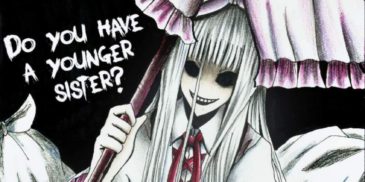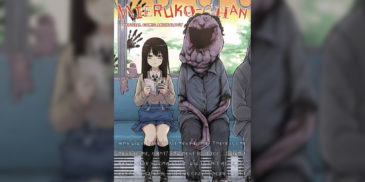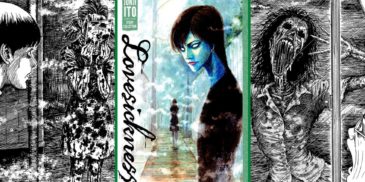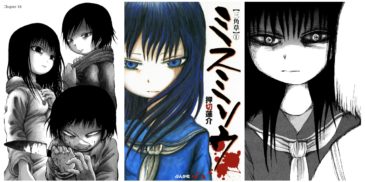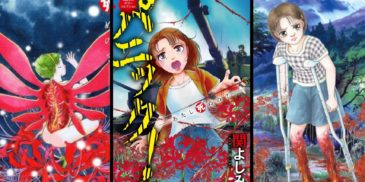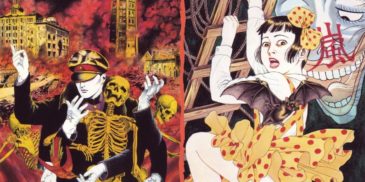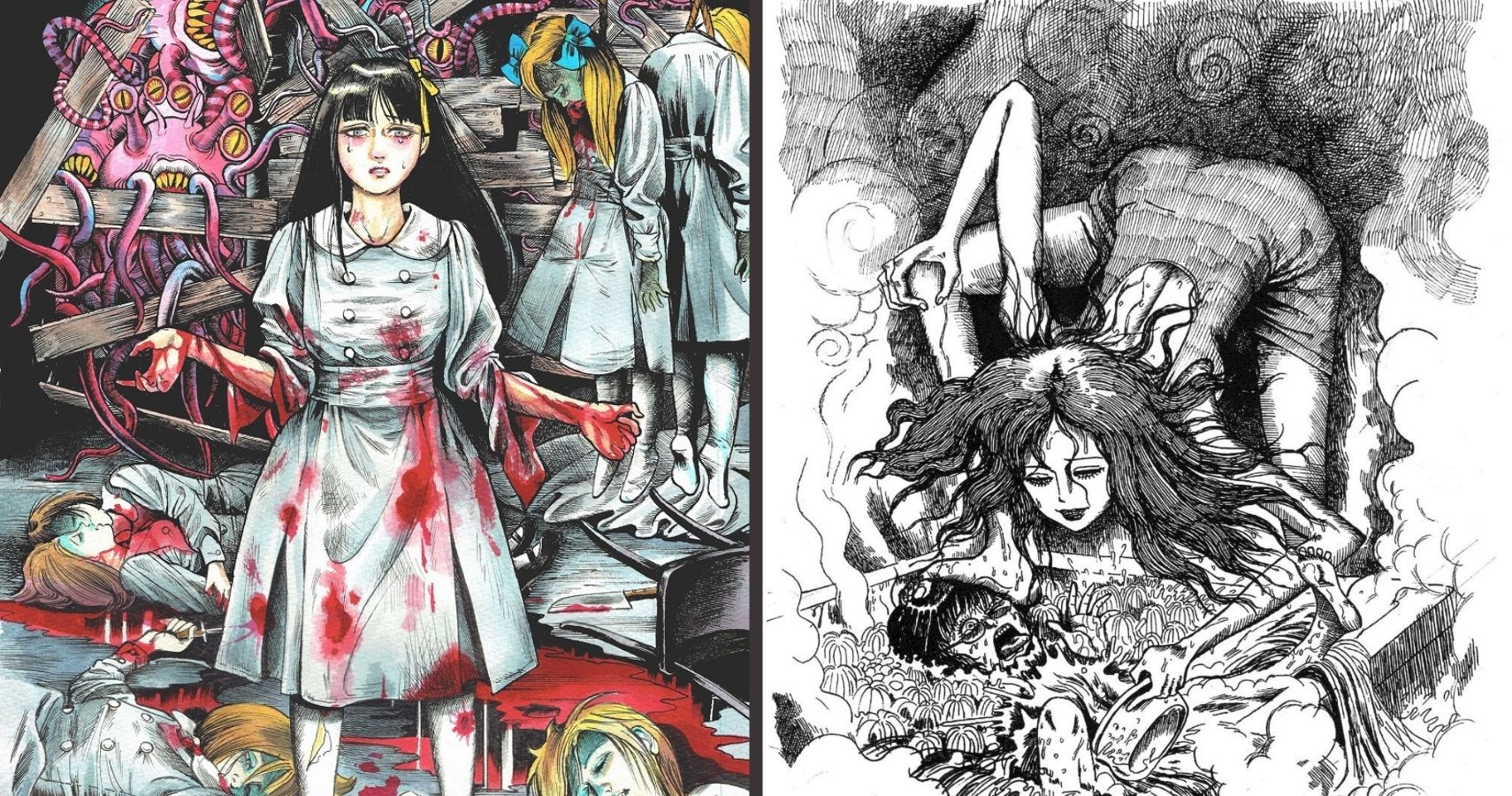
Horror manga has seen a steady surge in popularity with the likes of Junji Ito, making it to international recognition and closing the gap of mainstream versus the underground. To those who choose to dig a bit deeper, names such as Hideshi Hinio, Suehiro Marou, Shintaro Kago have also come to gain some notoriety within the genre in the more dedicated fanbase. Unfortunately, even these horror mangaka have much of their work not translated or available, despite their mastery of the craft being revered amongst die-hard fans.
However, at the bottom of the ‘iceberg’ of horror manga, there are those that have seen none of their work translated, disappointing fans unable to read Kanji scans as they may only be appreciated for the undeciphered art. One example of a mangaka resting in obscurity, albeit presenting stunning visions of horror, is Noroi Michiru.
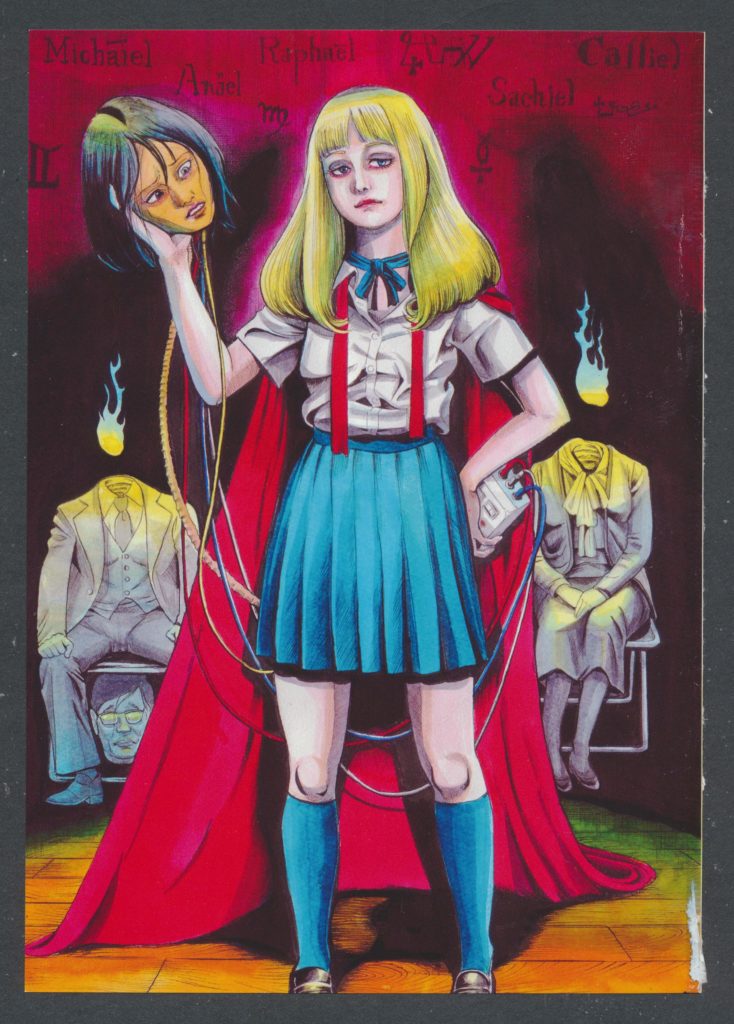
For fan translations, the only short story that currently exists (as far as I could discover) to read translated into English is a segment from Shoki Kessakusen, Volume 1: Luger-The Dwarf. It follows a young girl forming a pact with a dwarf in order to escape an abusive upbringing. The short is slightly surreal and also contains elements of the erotic grotesque with the major feature of the dwarf being an erection that towers over his head. At 16 pages there is not much to gleam from Michiru as a mangaka within this short other than a strong visual direction and a sense of humor.
According to Baka-Updates, Michiru is influenced by the likes of Hideshi Hino we have previously covered. One aspect of Hino’s work that often gets overlooked is the morbid sense of humor brought through a broken persona of himself as a storyteller that is interjected into a lot of his work. In this regard, the one short from Michiru does have the same kind of pacing and sense of self-awareness needed to express sharp dark wit to come across as playful instead of being a provocateur.
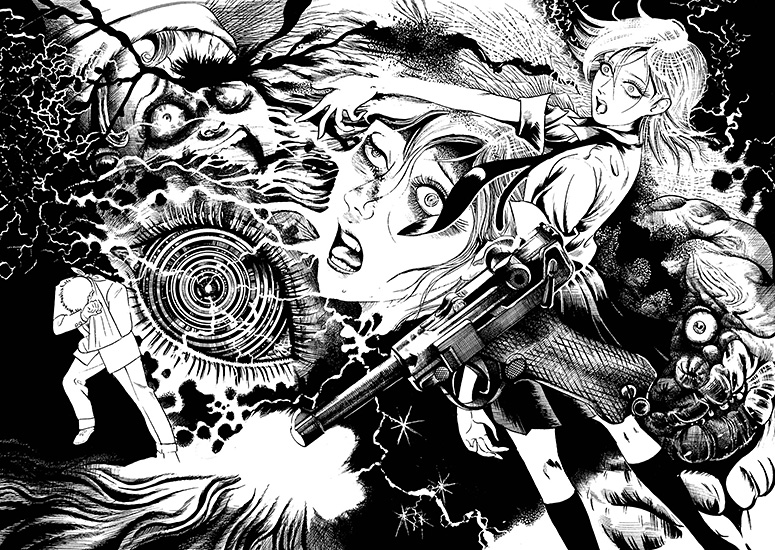
In terms of art, it is harder to pin down the influences of Michiru, although there exist homages to the works of Umezu, Hino, and Ito. It seems apparent his aesthetic – while feeling familiar – has been defined to his own unique style. Looking through his known releases, the mangaka also draws inspiration from both folklore and urban legends with titles dedicated to yokai or iconic creatures such as Kuchisake-onna, The Slit-Mouthed Woman (which has a surprisingly fun film adaptation we reviewed).
So, what can we learn from what little info there is available in English? Sadly, the answer is not much. However, as interest in manga continues to grow and the industry booms, the importance of buying manga geared towards the obscure is more important than ever for fans who want diversity within the genre. Yes, we all love Junji Ito, but the amount of talent out there that rests underexplored is unfortunate.
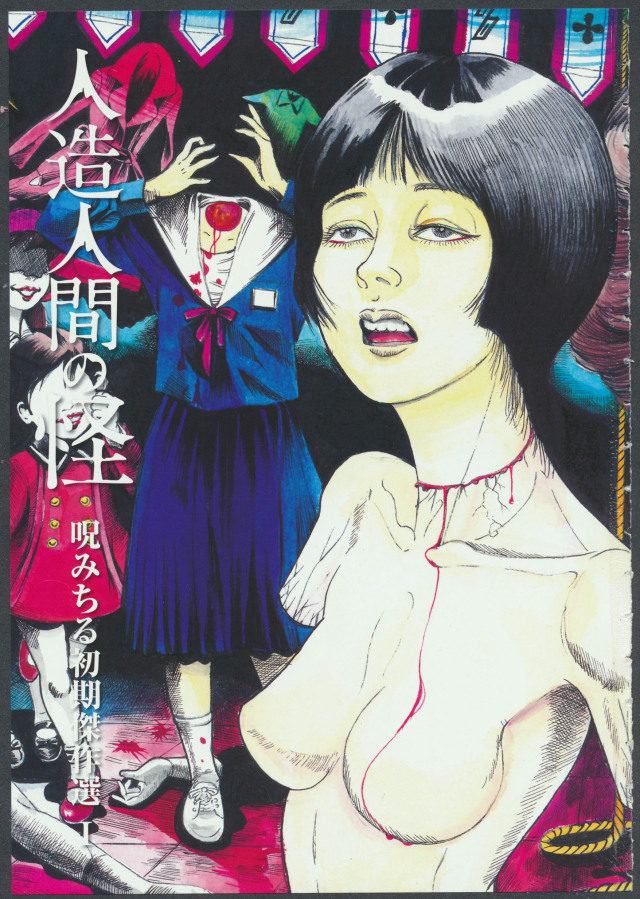
I am aware the lack of information makes this article more of a ‘hey check this out’, but my love of all things obscure and macabre hopefully leads to greater interest in self-exploration.
You can read Luger the Dwarf here, also big thanks to Dead Scantalations who support the manga community by making Japanese scans available while also promoting published work once it releases. You can shop for the original Japanese release of Michuri’s over at Mandrake. Finally, one may read the mangaka’s blog here.
More in Manga
Konnichiwa! Howdy! Dia Duit! If a gruesomely drawn extremity horror with sick fan service based on a Creepypasta style urban legend with a deranged Gothic Lolita as the lead is… Mieruko-chan Anthology Comic is a 2023 compendium of short, one-shot manga based around the characters of Tomoki Izumi’s popular supernatural manga/anime Mieruko-chan. The anthology features work from Yousuke Katayama, Shuu… Junji Ito’s at it again with the suicide-filled creepfest that is the Lovesickness collection, and like all of his work, it is worthy of a manga review. Taking its name… Before finding success with his nostalgic “High Score Girl”, Rensuke Oshikiri went full-Michael Haneke and brought us “Misu Misou”. Bleak, cruel, and extremely tragic, this manga explores to an extreme… Collecting eight stories from mangaka Yoshimi Seki, the Yoshimi Seki Horror Collection is a title divided in two parts thematically. Focusing on horrors associated with war, both realistic and born of… Horror is a tool. A tool used by the architect in order to design a macabre landscape, layered with mountains of fear and embedded with the riverbanks of mystery. Suehiro…Ibitsu: Creepypasta Style Urban Legend With a Deranged Gothic Lolita
Mieruko-chan Anthology Comic (2023) Manga Review – An Official Collection of One-Shots
Junji Ito Lovesickness Manga Collection Review
Misu Misou (2009) Manga Review – Not Quite Sweet Revenge
Yoshimi Seki Horror Collection Manga Review – Humanity at its Worst
Suehiro Marou – Icon of the Modern Erotic Grotesque Scene
